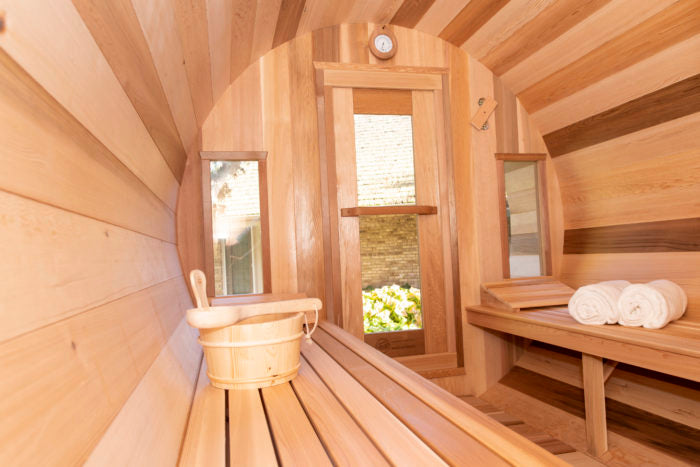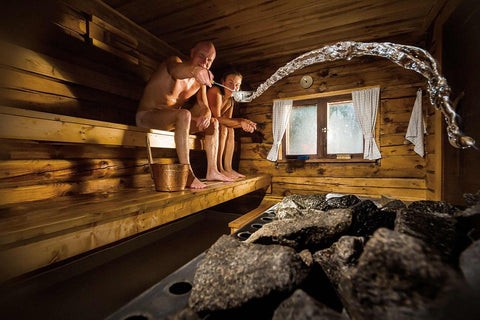10 Easy Facts About Traditional Sauna Shown
About Traditional Sauna
Table of ContentsWhat Does Traditional Sauna Do?The Basic Principles Of Traditional Sauna Fascination About Traditional SaunaRumored Buzz on Traditional SaunaGetting The Traditional Sauna To Work
The majority of the weight lost in a sauna is water loss and is re-gained upon rehydrating. Nonetheless, without a question sauna can be an integral part of a healthy weight loss program. To consider the differences between traditional and IR saunas, I will certainly separate these into verifiable, theoretical, and fabricated differences.Thus, the hottest point in the saunawhich is at the ceiling straight over the sauna heateris typically in between 185 and 190 F. Claims that a traditional sauna exceeds 200 F is simply not true and not relevant for electrical saunas marketed in the United States. The temperature level for a far-infrared sauna is normally established between 120 and 140 F; nevertheless, unlike the conventional sauna, the goal in and IR room is not to achieve a high temperature.
As a result of this, the temperature level distinction is practically unimportant, because profuse sweating causes both sauna kinds, but the method of warming the body is different. In an IR sauna the bather will certainly feel warm and will certainly sweat a lot, yet at much lower temperatures. Traditional Sauna. Thus, if the objective is to spend longer time periods in the sauna, the IR sauna is a good selection

The 8-Minute Rule for Traditional Sauna

When the high temperature is attained, the components cycle on and off to keep the high temperature level. Traditional Sauna. Most standard sauna individuals appreciate putting water over the rocks to develop vapor to increase sauna moisture degrees. The advantages of putting water over the rocks consist of: making the area extra comfy, dampening the nasal flows, and permitting the usage of aromatherapy by blending crucial oils with the water
In a far-infrared sauna, the heat waves penetrate the body to effectively heat the body and raise the body core temperature. To achieve this increased temperature, Far-infrared emitters create infrared energy which is close to the very same wavelength as that which the body naturally emitsoften referred to as the "Vital Variety" of 7 to 14 microns), so the power is well gotten by the body.
When the energy enters the body, it causes the body temperature to increase and ultimately causes sweat. In an infrared sauna it is essential for the emitters/heaters to remain on practically frequently. Since there is no mass of rocks to retain heat, the sauna will cool down if the emitters turned off.
Fascination About Traditional Sauna
As stated above, the sauna bather in an infrared room wants to position himself in front of operating emitters to get maximum gain from the warmth. The home heating time for the two rooms can be extremely various, depending upon exactly how the spaces are made use of. For image source a typical sauna, a bather ought to permit 30-40 mins for the room to accomplish a preferred temperature level and to correctly pre-heat the rocks.
A well built sauna will usually achieve a temperature level of 150-160 F in concerning 30-40 mins. For hotter temperatures, the space might need to heat for a longer period. When the space achieves established temperature level, the heating system will cycle on and off, generally operating regarding 50% of the time. The shielded walls and the heated rocks will maintain the space hot and at steady temperature levels.

Traditional saunas often tend to be larger (for this reason utilize even more electrical power) than infrared saunas, although standard saunas are absolutely available in one and two individual sizes also. For a two-person standard sauna, 5x6 or 5x7 dimension is most prominent. The leading bench can easily seat two or 3 individuals and is additionally enough time to relax throughout the sauna session.
The Buzz on Traditional Sauna
The ordinary expense per kWH of electrical power in the U.S. is roughly $0.11 - Traditional Sauna, so a 4.5 kW heater will cost approximately $.50 to run for one hour, if the heating unit runs continuously for one hour. Usually a sauna heater will certainly run for 75% of the very first hour and 50% of succeeding her explanation hours on because the aspects cycle once the set temperature is attained
A 2 individual far-infrared space is typically physically smaller sized than a typical sauna, usually concerning 4' x 4' or smaller. The IR heater is commonly 1.5-1.7 kW using a 120 volt 15 amp plug-in service. Because the area can be used faster than a sauna area, we will think the space is made use of for to of an visite site hour including warm up time.
There is a hardly ever gone over distinction in the social experience in between the 2 spaces. While our culture has shed several of the social benefit of the traditional sauna experience, it can be very socially fulfilling. From family members time in the sauna, to heart-felt discussions with better halves, to sauna partiesthe conventional sauna experience can lead to intimate socializing.
Some Known Factual Statements About Traditional Sauna
Most higher end infrared areas consist of colored light treatment, noise systems and full-glass fronts.